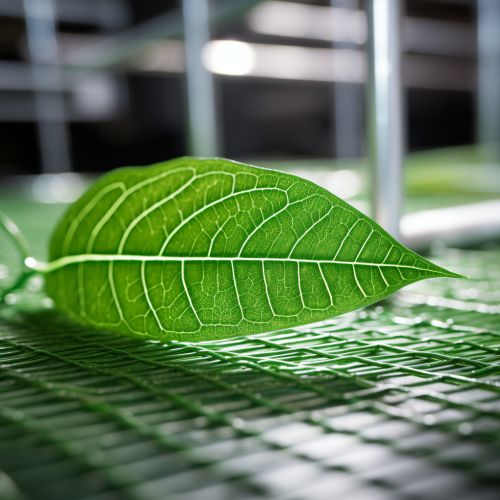Artificial Leaf Technology for Solar Energy Conversion
Introduction
Artificial leaf technology is a field of research within solar energy conversion that aims to mimic the natural process of photosynthesis to generate usable energy. This technology is seen as a potential solution for the global energy crisis, as it can convert sunlight directly into a storable and transportable fuel source.


Background
The concept of the artificial leaf was first introduced by American scientist Daniel Nocera and his team at the Massachusetts Institute of Technology (MIT) in 2011. The idea was to create a device that could use sunlight to split water into hydrogen and oxygen gases, much like a natural leaf uses sunlight to convert water and carbon dioxide into glucose and oxygen.
Design and Function
The design of an artificial leaf typically involves a thin, flexible, semi-transparent material that can absorb sunlight, much like the chlorophyll in a natural leaf. This material is often a type of semiconductor, such as silicon, which can absorb light and generate an electric current. The current is then used to power a chemical reaction that splits water into hydrogen and oxygen.
Applications and Potential
Artificial leaf technology has a wide range of potential applications, from providing a clean, renewable source of energy for homes and businesses, to powering electric vehicles and even producing oxygen for life support systems in space. The hydrogen produced by the artificial leaf can be stored and used as a fuel, either directly in a fuel cell or by converting it into another form of energy, such as electricity.
Challenges and Future Directions
Despite the potential of artificial leaf technology, there are still many challenges to be overcome. One of the main challenges is the efficiency of the water-splitting process, which is currently much lower than that of natural photosynthesis. Another challenge is the durability of the materials used in the artificial leaf, which can degrade over time and reduce the efficiency of the device.
